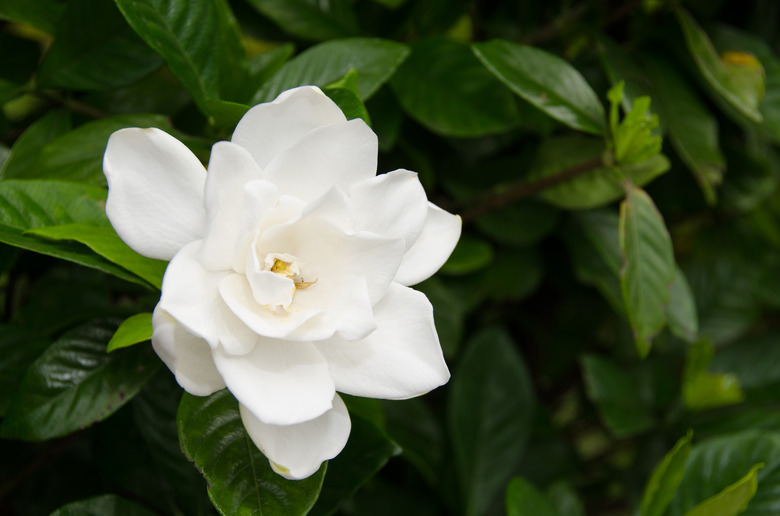How To Care For Dwarf Gardenias
We may receive a commission on purchases made from links.
The creamy, white flowers of the gardenia bush are gorgeous and fragrant against a backdrop of glossy dark leaves. If you're looking for a smaller plant, there are a wide variety of dwarf gardenias, such as the popular Gardenia jasminoides 'Radicans,' which can thrive indoors or as a perennial in USDA plant hardiness zones 8 through 10. Knowing how to care for dwarf gardenias can ensure that the plant will produce beautiful blooms from spring to fall.
Tip
Make sure the soil is well-drained and fertilized properly for long-term success with your dwarf gardenias.
Temperatures and Dwarf Gardenias
Temperatures and Dwarf Gardenias
Native to tropical and subtropical areas, dwarf gardenias prefer a warm climate with little chance of frost. While dwarf gardenias require the same care as other types of gardenias, they can be more susceptible to cold weather. They prefer a steady temperature during the day of around 65 to 70 degrees Fahrenheit.
Even in its hardiness range, protect a dwarf gardenia in freezing weather by putting a cardboard box over the shrub or wrapping the stems in bubble wrap, especially if a hard freeze is expected. Mulch or rags under the box or around the base of the plant can help keep it warm. If the stems turn black from cold, snip them back.
Soil and Water Needs
Soil and Water Needs
The glossy leaves and thick buds need just the right amount of water and good soil to thrive. The bushy plants grow best in acidic soil. For the best results, the garden bed or pot where the dwarf gardenia will be planted should have a soil pH of between 5 and 6.
While these plants prefer moist soil, they don't like to sit in soggy soil. Make sure that the area is well-drained or the leaves may turn yellow or brown and fall off. Amend the soil with compost and fold in some gritty matter before planting to ensure that the area or pot has good drainage. Give your gardenia an inch of water each week to ensure the roots don't rot and the plant can flourish in its location.
Gardenias enjoy humidity. Indoors, mist the leaves with water daily to keep them moist. For landscaped plants, place them near water features, a birdbath or a dish of water to increase the humidity around the plant.
Fertilizing Needs for Dwarf Gardenias
Fertilizing Needs for Dwarf Gardenias
Use a fertilizer that's formulated for acid-loving plants, preferably one that also has iron, making one application in spring and another one in summer. Optionally, a granular time-release fertilizer formula can be applied at the start of the spring growing season. Once summer begins to wane, stop fertilizing the plants and allow them to go dormant.
Pruning Dwarf Gardenias
Pruning Dwarf Gardenias
To keep those lovely and fragrant flowers flowing, prune blooms as soon as they are finished. Snip the spent flowers just below the leaf node. Also after flowering, take the opportunity to tidy up the sprawling branches.
Look for stems that cross each other and trim them so that branches are tidy. The trimming of crowded stems allows light to reach the center of the plant. Cutting back the gardenia's branches not only encourages better blooms, but it also discourages fungal diseases that can attack the plant in the moist, dark conditions at the soil line.
